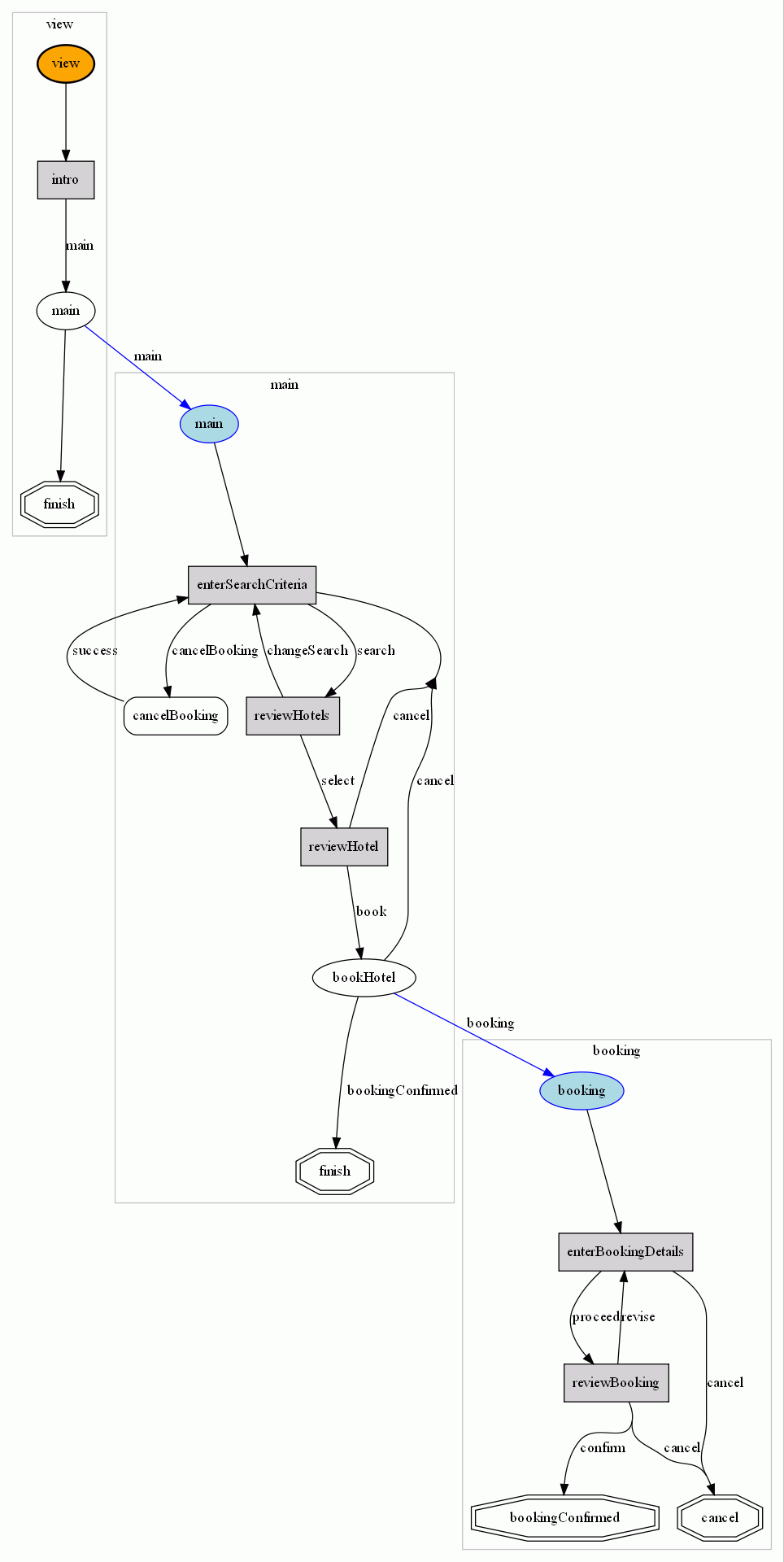This python script processes spring webflow configuration (flow.xml files) and makes a graph of the flow states using graphviz dot utility.
Note - python and graphviz must be available on the PATH.
usage: visualize_webflow.py [-h] [-d] [-s] [--skip-flows SKIPFLOWS]
[--skip-states SKIPSTATES]
[--split-states SPLITSTATES]
[--merge-states-min-inputs MERGEMINTOTAL]
[--merge-states-min-common-inputs MERGEMINCOMMON]
[--merge-states-max-diff-inputs MERGEMAXDIFF]
[--hide-conditions]
[--flow-id-path-steps FLOW_ID_PATH_STEPS]
[-o OUTPUT] [-v]
input
positional arguments:
input the path to <webflow-servlet.xml> or <flow.xml>
optional arguments:
-h, --help show this help message and exit
-d, --dot invoke DOT to generate a PDF for each flow (requires
-o or -s)
-s, --split split output by subflow
--skip-flows SKIPFLOWS
comma-separated list of subflows to skip
--skip-states SKIPSTATES
comma-separated list of states to skip
--split-states SPLITSTATES
comma-separated list of states to split (for
frequently used states)
--merge-states-min-inputs MERGEMINTOTAL
auto-merge states with at least this many inputs
(default 5)
--merge-states-min-common-inputs MERGEMINCOMMON
auto-merge states with at least this many common
inputs (default 3)
--merge-states-max-diff-inputs MERGEMAXDIFF
auto-merge states with at most this many different
inputs (default 7)
--hide-conditions hide decision state conditions
--flow-id-path-steps FLOW_ID_PATH_STEPS
how many steps in the flow.xml path to use as flow ID
(default 1)
-o OUTPUT, --output OUTPUT
output DOT file name (ignored if -s is specified)
-v, --verbose be verbose

